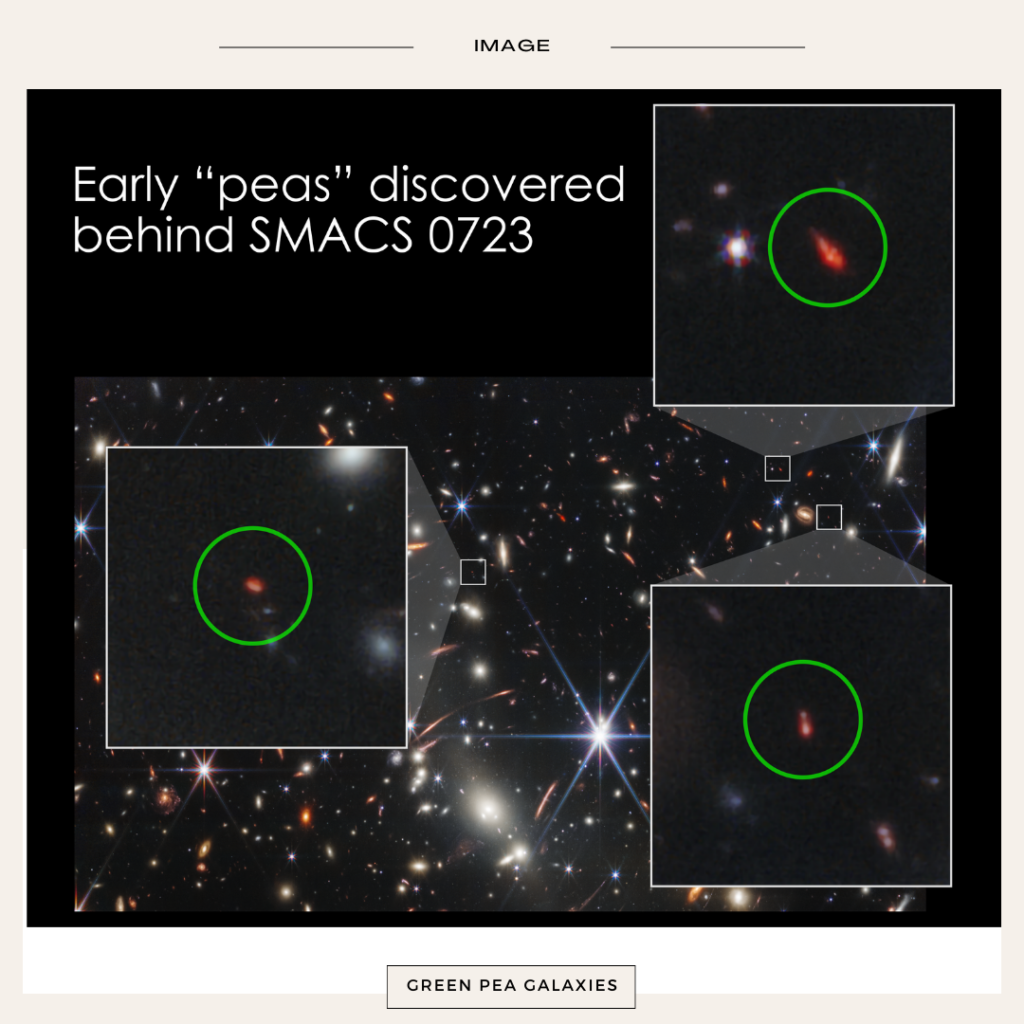It’s possible the Green Pea galaxies played a role in reionizing the cosmos revealed by The James Web Telescope.
Recent discoveries are signalling that small, spherical, and green galaxies may have played a key role in the evolution of the early universe.

“With detailed chemical footprints of such early galaxies, we observe that they contain what is possibly the most primordial galaxy discovered to this point. We know this because these early galaxies have provided us with these fingerprints. James Rhoads, an astrophysicist at NASA’s Goddard Space Flight Center in Greenbelt, Maryland, who presented the findings at the 241st meeting of the American Astronomical Society in Seattle, stated that “At the same time, we can connect these galaxies from the dawn of the universe to similar ones nearby, which we can study in much greater detail.”
On January 3, a report explaining the findings, which Rhoads led the charge on writing, was published in The Astrophysical Journal Letters.
The “Green Pea” galaxies were discovered by astronomers using the James Webb Space Telescope. These galaxies date back 13.1 billion years. At a news conference held on January 9 in Seattle during the annual meeting of the American Astronomical Society, astronomers said that these iridescent runts, which were discovered just 700 million years after the Big Bang, could have helped trigger one of the biggest makeovers in the history of the universe. The conference was held in conjunction with the meeting.
The Sloan Digital Sky Survey is an ambitious effort that aims to scan most of the sky. Green Peas was discovered for the first time in 2009 in photographs from the survey. Volunteers participating in citizen science came up with creative names for the things. The majority of their light, rather than coming straight from the stars, comes from incandescent gas clouds, which is why they have a greenish hue.
In the universe as we know it now, galaxies like these are extremely uncommon. Astronomers believe that the galaxies that do exist now are relics of a time when there were a greater number of them in the universe’s early stages.
These galaxies emit significantly more ultraviolet light than conventional galaxies do, which has the potential to strip electrons from atomic nuclei. Therefore, Green Peas that date back to the first billion years or so of the universe could be partially responsible for a dramatic and mysterious cosmic transition known as reionization. This transition occurred during a time when the majority of the hydrogen atoms in the early universe had their electrons ripped away (SN: 1/7/20).
In the very first picture taken by the JWST, which was made public in July 2022 (SN: 7/21/22), there were three ancient Green Peas. The infrared vision of JWST shows the objects to be red, yet the wavelengths of light they release are comparable to those of the Green Peas that were found earlier. The observations were also presented in a letter that was published in the Astrophysical Journal on January 1.
Astrophysicist James Rhoads, who works at the Goddard Space Flight Center in Greenbelt, Maryland, for the National Aeronautics and Space Administration (NASA), compared them to “living fossils.” “Coelacanths, if you will,” referring to a species of fish that was considered to be extinct until it was discovered in 1938 off the coast of South Africa (SN: 12/2/11).
Rhoads stated that this contributes to our understanding of how the reionization of the universe occurred. “I believe that this is an essential part of the whole picture.”
